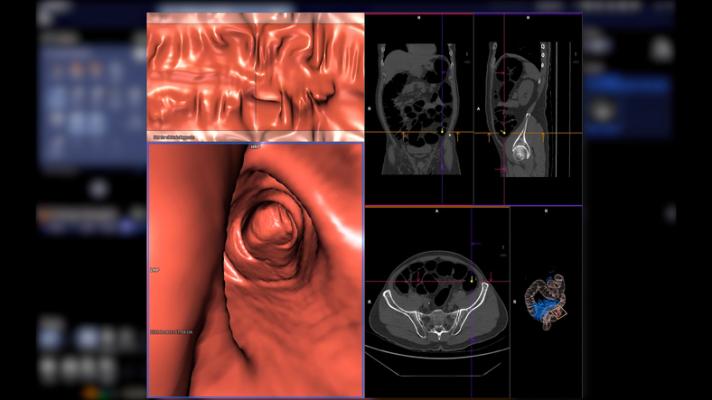
An update to the CT Colonography Reporting and Data System (C-RADS) was published Jan. 30 in the journal Radiology. According to a written statement from the Radiological Society of North America (RSNA), “CT Colonography Reporting and Data System (C-RADS): Version 2023 Update,” licensed by the American College of Radiology (ACR) provides useful insights gained since the implementation of the original system in 2005. Image courtesy: Getty Images
February 6, 2024 — An update to the CT Colonography Reporting and Data System (C-RADS) has been published Jan. 30 in the journal Radiology. According to a written statement from the Radiological Society of North America (RSNA), “CT Colonography Reporting and Data System (C-RADS): Version 2023 Update,” provides useful insights gained since the implementation of the original system in 2005.
“The CT Colonography Reporting and Data System (C-RADS), established by the American College of Radiology (ACR) through its ACR Committee on C-RADS (CT Colonography), provides a framework to effectively communicate CT colonography (CTC) findings. The core scheme of C-RADS has endured the test of time,” wrote the authors, who added, “For more than 18 years, it has served as an excellent guide for the interpretation and reporting of colonic and extracolonic findings. However, our collective experience with C-RADS has prompted the development of the C-RADS version 2023 update.”
Essential updates noted include:
■ CT Colonography Reporting and Data System (C-RADS) version 2023 updates the classification and management of CT colonography examinations 18 years after the initial proposal of C-RADS.
■ Category C2 is now subcategory C2a, and a new subcategory, C2b, is introduced for mass-like diverticular strictures that are likely benign.
■ Extracolonic classification is simplified by merging categories E1 and E2 into a common E1/E2 management recommendation signifying no extracolonic findings requiring follow-up.
C-RADS has withstood the test of time and proven to be a robust classification scheme for CT colonography (CTC) findings. The C-RADS v2023 represents an update on the scheme used for colorectal and extracolonic findings on CTC, noted the statement. It further added that increased experience has demonstrated confusion on how to classify the mass-like appearance of the colon consisting of soft tissue density that occurs in segments with acute or chronic diverticulitis. Therefore, the update introduces a new subcategory, C2b, specifically for mass-like diverticular strictures that are likely benign.
Additionally, the update simplifies extracolonic classification by combining E1 and E2 categories into an updated extracolonic category of E1/E2 since irrespective of whether a finding is considered a normal variant (E1) or an otherwise clinically unimportant finding (E2), no additional follow-up is required. This simplifies and streamlines the classification into one category which results in the same management recommendation.
Authors wrote: “The American College of Radiology (ACR) reporting and data systems continue to expand and evolve with numerous classifications for various organs and anatomic regions. The overarching goals of all the reporting and data system classifications are similar and include the development of standardized terminology and report structure. Standardization allows for more consistent and reliable communication of findings. These findings then form the basis of recommendations for patient treatment and follow-up. Additionally, reporting and data systems enable uniform classification of data for use in research studies and facilitate the assessment of quality metrics and patient outcomes.”
They continued, “The CT Colonography Reporting and Data System (C-RADS) is one of the oldest classifications and has become widely used since its introduction in 2005 (1). The original system includes criteria for the evaluation of both colorectal lesions (categories C0–C4) and extracolonic findings (categories E0–E4). Descriptors of colorectal polyps and masses include lesion attenuation, morphologic characteristics, size, and location. Each category of colorectal findings and extracolonic findings is associated with a linked recommendation applicable to both screening and diagnostic CT colonography (CTC).”
The C-RADS update article authors further offered: “Overall, increased experience with the use of C-RADS demonstrates its proven utility, which has helped achieve the stated goals of reporting and data system classifications (2). However, as more centers have implemented C-RADS, specific areas require clarification. Thus, herein we present C-RADS version 2023, which introduces several important updates. We hope this update encourages wider adoption of CTC and further standardizes the reporting and management of colonic and extracolonic findings using a simplified, clinically useful standardized lexicon and reporting structure for CTC.”
More information: www.pubs.rsna.org


 December 17, 2025
December 17, 2025 









